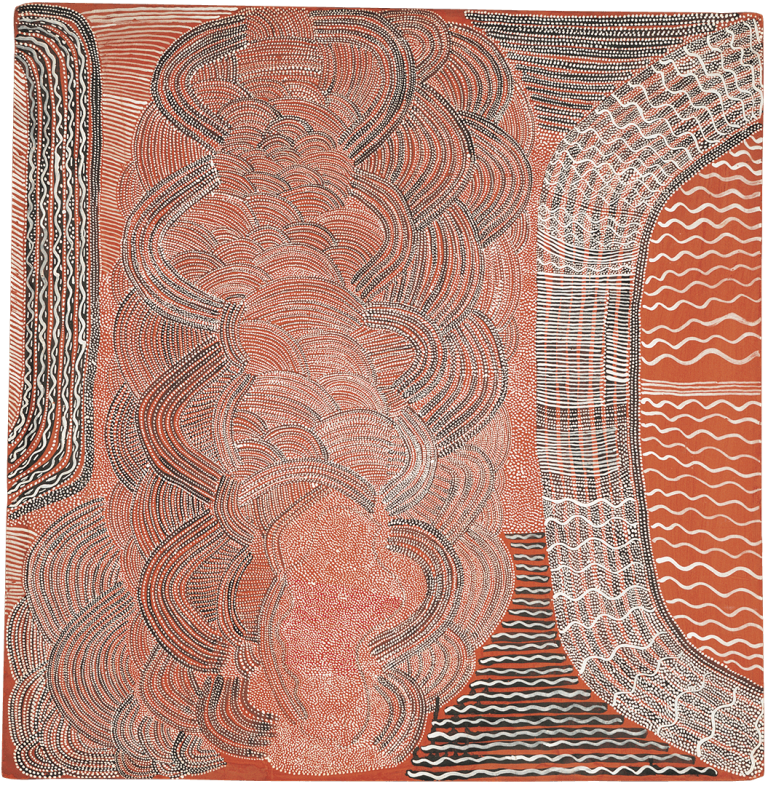We acknowledge the Traditional Owners of the land on which the Queensland Art Gallery | Gallery of Modern Art stands and recognise the creative contribution First Australians make to the art and culture of this country.

Mick Namarari Tjapaltjarri / Pintupi people / Australia 1926–98 / Bush tucker story 1972 / Synthetic polymer paint and natural pigments on composition board / 78 x 76.5cm / Purchased 1995 with a special allocation from the Queensland Government. Celebrating the Queensland Art Gallery’s Centenary 1895–1995 / Collection: Queensland Art Gallery | Gallery of Modern Art / © Estate of Mick Namarari Tjapaltjarri. Licensed by Aboriginal Artists Agency Ltd
Mick Namarari TjapaltjarriBush tucker story 1972
Not Currently on Display
Bush tucker story 1972 is an early Papunya board painting by Mick Namarari Tjapaltjarri, a senior member of the Western Desert art movement. Papunya artists are some of the most celebrated in Australia, renowned for the dot-painting style that was originally used to conceal special markings intended only for initiated men to see.
As a senior ceremonial man, Tjapaltjarri illustrated the dreamings of his people. In its reference to bush tucker, this work acknowledges the life-giving qualities of nature and the spiritual power of the land.
The organic symmetry of the painting reflects the traditional practice of working with round, oval and spiral forms on irregular sand and rock surfaces, as well as on the curved forms of coolamons, shields and sacred boards. The swirling vortex that dominates the work is a representation of the rhythm and movement of underground roots stimulated by rainwater running over the ground (seen here as wavy lines). Rainbows appear as arched forms on either side of the central motif.
Mick Namarari Tjapaltjarri was born at Marnpi, south-west of Mount Rennie in the Northern Territory. A prolific painter, he was involved in the Papunya art movement from its inception.
Tjapaltjarri’s painting career began in 1971, and his artistic achievements were officially recognised in 1994, when he won a prestigious Creative Australia Fellowship through the Australia Council. During his lifetime, Tjapaltjarri won numerous awards, and his work is represented in all major Australian galleries.
Endnotes:
Drawn from Biography of Mick Namarari Tjapaltjarri, Art Gallery of NSW, 2014.
Discussion Questions
1. What qualities of nature and the land are celebrated in Mick Namarari Tjapaltjarri’s painting?
2. How do artworks such as this one relate to Indigenous peoples’ dreamings?
Classroom Activities
1. Research the Papunya art movement.
2. In a drawing or painting, experiment with different camouflage techniques to hide some elements. Do you think this layering technique creates more visual interest in your work?